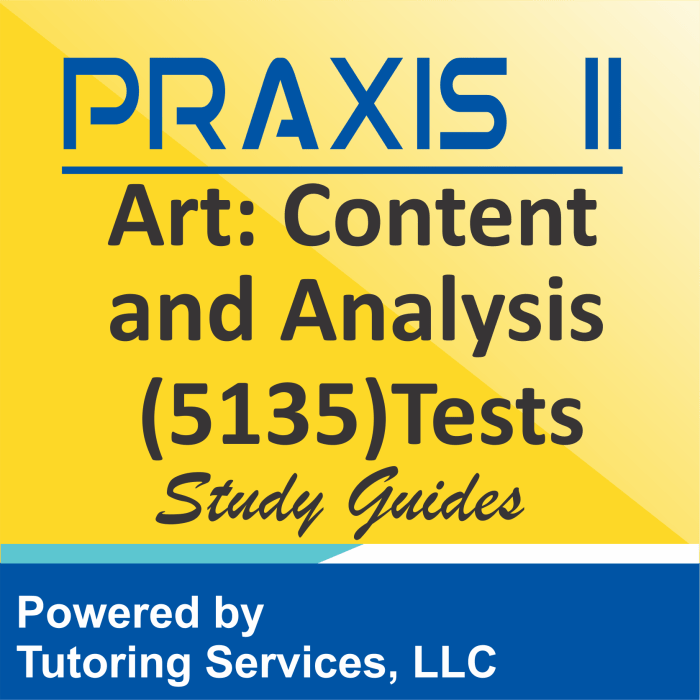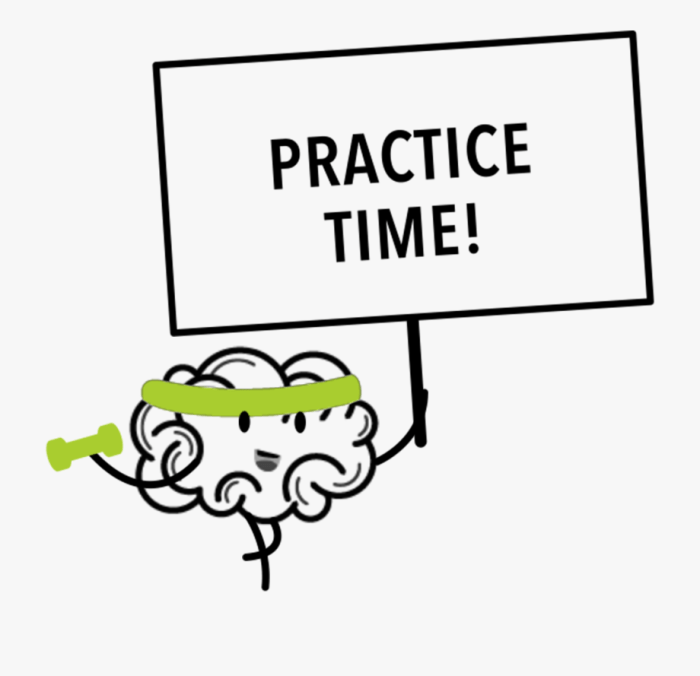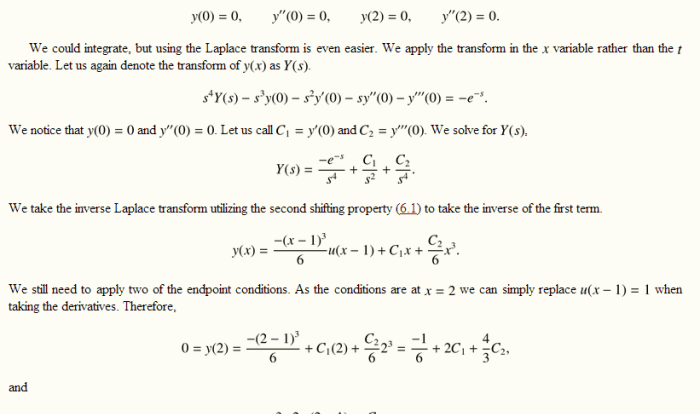Prepare to conquer the Art Praxis 5135 practice test with this comprehensive guide. Dive into the intricacies of the exam, master the content, and uncover proven preparation strategies that will propel you towards your desired score.
The Art Praxis 5135 practice test serves as a crucial assessment tool for aspiring art educators. Its purpose is to evaluate your knowledge and skills in the field of art education, ensuring that you possess the necessary foundation to excel in your future role.
Exam Overview

The Art Praxis 5135 practice test is a standardized exam designed to assess the skills and knowledge of prospective art teachers. It is used by many states and school districts as part of the teacher certification process.
The purpose of the exam is to ensure that candidates have the necessary content knowledge and pedagogical skills to effectively teach art in K-12 classrooms. It covers a wide range of topics, including art history, art criticism, art production, and art education.
Target Audience
The Art Praxis 5135 practice test is intended for individuals who are seeking certification to teach art in public schools. It is typically taken by candidates who have completed an undergraduate degree in art education or a related field.
Content: Art Praxis 5135 Practice Test
The Art Praxis 5135 Practice Test covers a comprehensive range of topics in art education. The exam is divided into three sections:
Section 1: Foundations of Art Education
This section assesses candidates’ knowledge of the historical, philosophical, and theoretical foundations of art education. Topics covered include:
- Historical Perspectives on Art Education
- Philosophical Foundations of Art Education
- Theories of Art Education
Section 2: Curriculum and Instruction in Art Education
This section evaluates candidates’ understanding of curriculum development, instructional strategies, and assessment practices in art education. Topics covered include:
- Curriculum Development in Art Education
- Instructional Strategies in Art Education
- Assessment in Art Education
Section 3: Professional Issues in Art Education
This section explores the ethical, legal, and professional responsibilities of art educators. Topics covered include:
- Ethical Issues in Art Education
- Legal Issues in Art Education
- Professional Development in Art Education
Question Types

The Art Praxis 5135 Practice Test employs a range of question formats to assess candidates’ knowledge and skills.
These question types vary in their structure, content, and response requirements, and it is crucial for candidates to be familiar with each type to perform optimally during the exam.
Multiple Choice Questions
- Present a question or statement followed by several answer choices.
- Candidates select the single best answer from the options provided.
- Example: Which of the following is a primary color? (a) Blue, (b) Green, (c) Yellow, (d) Orange
True/False Questions
- Pose a statement that is either true or false.
- Candidates indicate whether the statement is true or false.
- Example: The Renaissance was a period of artistic decline in Europe.
Short Answer Questions
- Ask specific questions that require brief, written responses.
- Candidates provide concise answers that demonstrate their understanding of the topic.
- Example: Describe the characteristics of Baroque architecture.
Essay Questions
- Present broad topics or questions that require extended, written responses.
- Candidates develop structured essays that demonstrate their critical thinking, analytical skills, and knowledge of the subject matter.
- Example: Discuss the influence of Impressionism on the development of modern art.
Scoring and Interpretation

The Art Praxis 5135 exam is scored using a scaled score system. The scaled score range is 100-300, with a mean of 150 and a standard deviation of 20.
Your scaled score is based on the number of correct answers you provide. The more correct answers you provide, the higher your scaled score will be.
Performance Levels
There are three performance levels for the Art Praxis 5135 exam:
- Level 1:This level indicates that you have a basic understanding of the content covered on the exam.
- Level 2:This level indicates that you have a good understanding of the content covered on the exam.
- Level 3:This level indicates that you have a strong understanding of the content covered on the exam.
Your performance level will be based on your scaled score. The following table shows the scaled score ranges for each performance level:
| Performance Level | Scaled Score Range |
|---|---|
| Level 1 | 100-149 |
| Level 2 | 150-199 |
| Level 3 | 200-300 |
Your performance level will be reported on your score report. You can use your performance level to identify areas where you need to improve your knowledge and skills.
Preparation Strategies
Preparing for the Art Praxis 5135 exam requires a well-rounded approach that combines effective study methods and the utilization of relevant resources. Here are some tips and strategies to help you succeed:
Study Methods
Adopt active learning techniques such as creating flashcards, summarizing key concepts, and engaging in discussions with peers or a study group. This helps reinforce your understanding and improves recall.
Break down the study material into manageable chunks and focus on one concept at a time. This allows for better comprehension and retention.
Practice regularly by completing practice questions and mock exams. This not only tests your knowledge but also familiarizes you with the exam format and time constraints.
Resources
Utilize the official Praxis website for study guides, sample questions, and other helpful materials.
Consult textbooks, journals, and online resources that cover the exam content. Ensure these sources are reputable and up-to-date.
Consider enrolling in a preparation course or workshop to gain structured guidance and access to additional resources.
Practice Materials and Techniques
Practice using a variety of question types, including multiple-choice, short answer, and constructed response. This ensures you are comfortable with all formats.
Time yourself during practice tests to simulate the actual exam conditions and improve your time management skills.
Review your answers thoroughly after completing practice questions to identify areas for improvement and reinforce your understanding.
If you’re looking to brush up on your art praxis skills, you might want to check out the Art Praxis 5135 practice test. This test is designed to help you prepare for the Unit 4 Progress Check: FRQ, which is a required assessment for the Art Praxis 5135 exam . The practice test includes a variety of questions that cover the same content areas as the actual exam, so it’s a great way to get a sense of what to expect on test day.
Additional Resources

To enhance your preparation for the Art Praxis 5135 Practice Test, explore the following resources:
Official ETS Website, Art praxis 5135 practice test
Study Guides and Practice Tests
Online Forums and Discussion Groups
Answers to Common Questions
What is the Art Praxis 5135 practice test?
The Art Praxis 5135 practice test is a comprehensive assessment designed to evaluate your knowledge and skills in the field of art education.
Who should take the Art Praxis 5135 practice test?
Aspiring art educators who wish to pursue teacher certification are required to take the Art Praxis 5135 practice test.
What does the Art Praxis 5135 practice test cover?
The Art Praxis 5135 practice test covers a wide range of topics, including art history, art criticism, art production, and art education methodologies.
How can I prepare for the Art Praxis 5135 practice test?
Effective preparation for the Art Praxis 5135 practice test involves studying the content, practicing with sample questions, and utilizing resources such as study guides and online forums.
